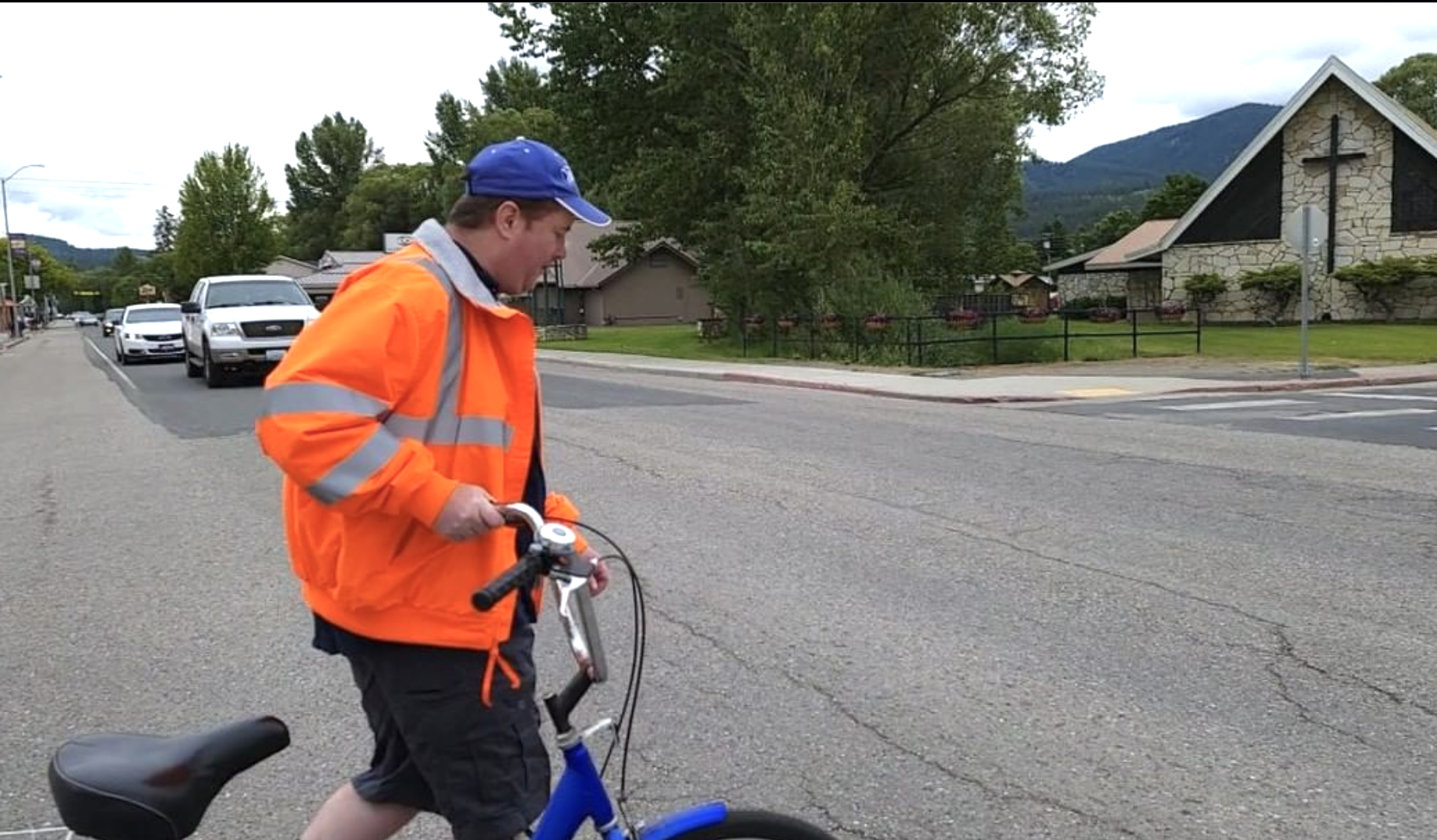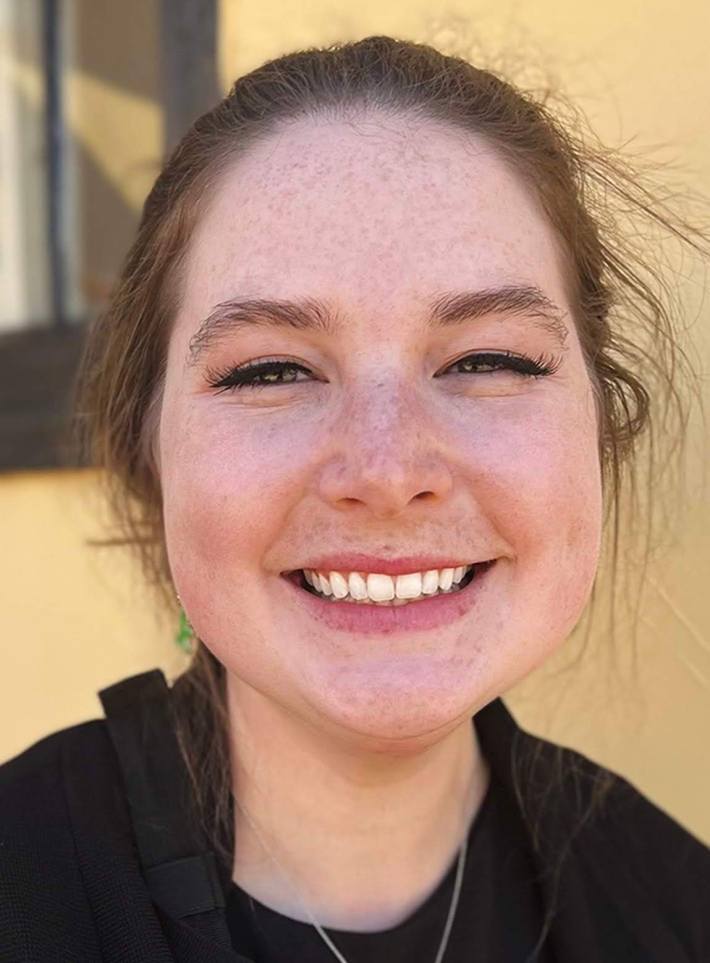Week Without Driving, an eye-opening campaign by the Disability Mobility Initiative, will happen in Washington state next week (Sept. 19-25). The week-long event calls on people who normally can drive to spend a week going about their daily lives with one key change: They could not drive themselves. The goal is for participants to spend a week in the shoes of people who are non-drivers out of necessity. Participants are invited to share their experiences on Twitter in real time, under the hashtag #WeekWithoutDriving. In a world of able-bodied activists who are non-drivers by choice, or nondrivers when it is convenient, there is a gaping lack of knowledge surrounding the almost one-third of the population who are non-drivers out of necessity. Disability Mobility Initiative, a program of Disability Rights WA, is closing that gap.
I participated in WWD last year. For an outsider, watching Week Without Driving progress from Day 1 to Day 7 was like watching a sea of lightbulbs gradually switch on. One could watch participants learn more and more each day what their non-driving neighbors experienced on a daily basis — and compare it to their own experiences driving a single-occupancy vehicle.
The first light bulb to fire was understanding how much research and coordination it takes to get around without driving — checking bus schedules and routes, checking walking distances and weather forecasts, checking sidewalk conditions (or their presence in the first place).
The second was complications — what to do if one left their umbrella at home on a rainy day, how to prepare for travel in the evening when one left the house in the morning and couldn’t store things in their car.
The third was timing. After a few days without driving, once the excitement wore off and the exhaustion set in, participants started to realize just how much more time non-driving transportation requires. They had to leave their homes earlier and get back later. They had to budget hours for riding on or waiting for the bus, avoiding inclement weather, or waiting for a friend to pick them up. They lost out on time at work, time with their families, and free time.
The final realization, that nondrivers are directly and indirectly treated as second-class members of society, hit the hardest. Some participants had to break the rules in order to make it to meetings or site visits, which were completely inaccessible without a car. Most came to realize how vulnerable they were while walking or cycling on roads without proper infrastructure, and that without a car they had no better options. What followed was the understanding that their nondriver neighbors were always more vulnerable on roads, and at the end of the week did not have the option to return to driving an SUV. Disability Mobility Initiative works to spread awareness of this fact, and of the disproportionate danger that vulnerable and/or marginalized groups face when they are non-drivers, stating:
Those of us who can’t drive or don’t have access to a car are more likely to be disabled, BIPOC and immigrants. We are also elders and young people, as well as those who can’t afford to own or maintain a vehicle. We are organizing for a future where non-drivers can access our communities.
Week Without Driving used the viral power of social media to its benefit. Most advocacy groups like DMI are no stranger to social media - which can make it all the more difficult to stand out amongst the flood of calls to action. Week Without Driving was promoted mostly on Twitter, where notices about the event and participants’ daily experiences could be found under the hashtag #WeekWithoutDriving.
Though participants were largely based in Seattle and the surrounding area, #WeekWithoutDriving garnered an audience across the United States. Those who learned about the event early in the week could follow the remainder in real time. Several participants, including Seattle City Councilmember Tammy Morales (@CMTammyMorales) and Washington State Senator Emily Randall (@SenEmilyRandall) posted detailed descriptions of their experience each day, complete with pictures and timestamps. Perhaps Week Without Driving’s widespread digital footprint was just luck. More likely, it was a result of the sincerity, compassion, and hard work of its participants.
Next week is #WeekWithoutDriving! We're encouraging everyone to get around Kitsap County without using a car for one week, to better understand the daily experience of folks who are unable to drive.
— Kitsap Transit (@KitsapTransit) September 14, 2022
For more info and to register, visit https://t.co/gQwxPkOj9K. pic.twitter.com/be5G9pvxVM
Councilmember Tammy Morales and King County Councilmember Girmay Zahilay were among a collection of elected officials invited to participate in WWD. While no stranger to pedestrian rights before taking part in WWD, Morales and Zahilay have both become outspoken advocates of disability rights and work to raise awareness of the lived experiences of nondrivers. Today, they are champions of pedestrian-focused design. They are a testament to the power of Week Without Driving and the hard work of Disability Mobility Initiative in raising awareness of the issues nondrivers face to the people with the power to change them.
As Disability Mobility Initiative prepares for Week Without Driving 2022, people around the U.S. will be gearing up for another great week of watching lightbulbs go off, watching elected officials become advocates, and watching friends and neighbors learn a little bit more about what it means to be a nondriver. Those wishing to participate can sign up here. Follow Disability Mobility Initiative on Twitter to stay up to date, and check out #WeekWithoutDriving to watch participants as they progress through the event, and watch testimonials from past participants.
Addie Walker (@addie4transit) is an active transportation advocate based in Austin, TX. She works as the advocacy program manager for Black+Vernooy Architecture and Urban Design, is involved with local organizations CNU - Central Texas and Reconnect Austin, and is a fellow of the 2022 Texas State Walking College hosted by America Walks and AARP Texas.







